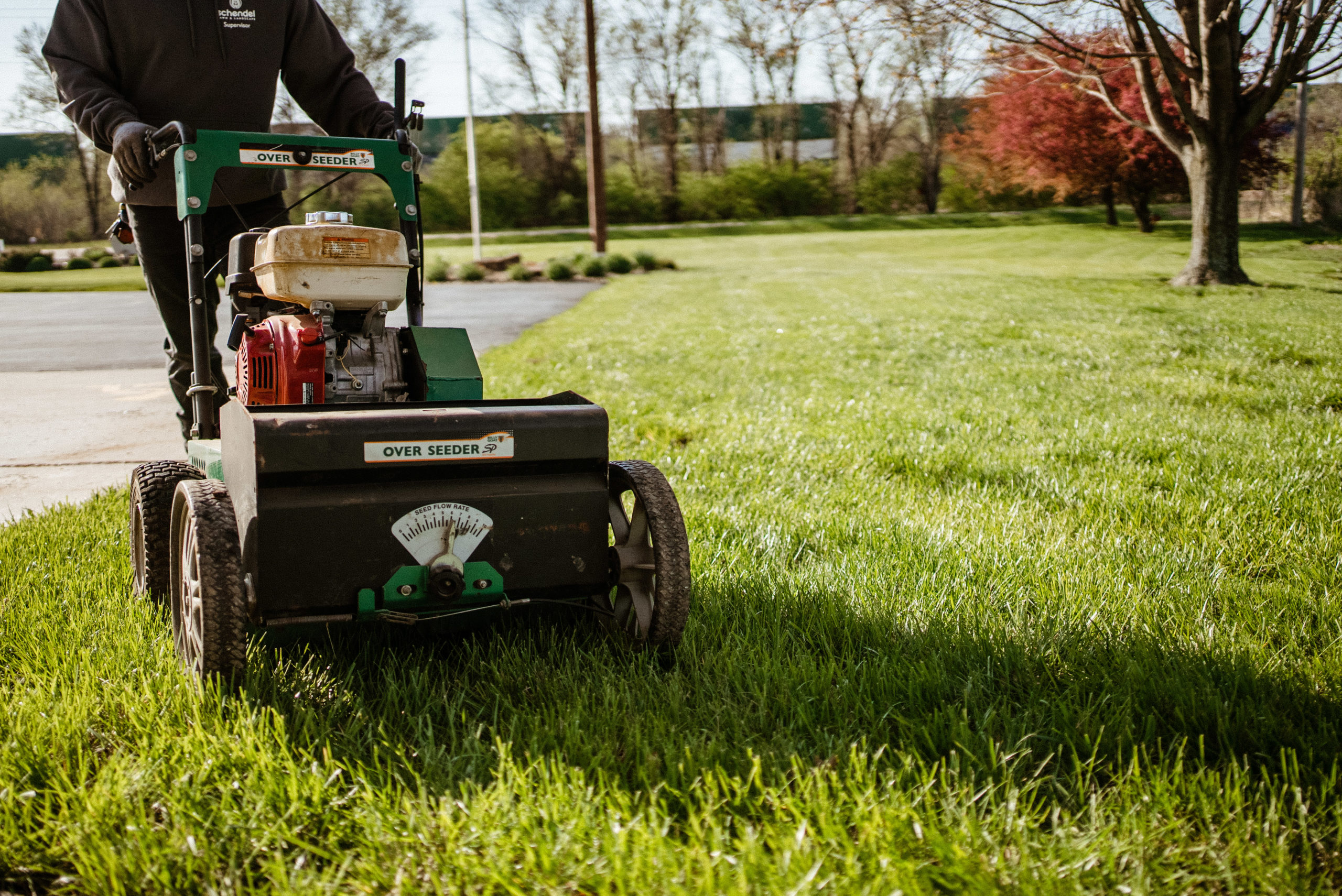To ensure best results from overseeding, please follow these watering and care instructions. If you have any questions about how to care for your lawn, please call our office so we can help make your seeding a success!
Watering Instructions After Seeding
Watering is critical! New grass cannot germinate unless it is kept moist. Once wet, it needs to remain wet or it will die, so daily watering of the seeded area is essential.
How to Water
If you have an irrigation system, we are happy to program the watering schedule while we are seeding — just let us know if you’d like us to do so.
You can also purchase a programmable watering system for use with a normal garden hose. If possible, the best time to water is prior to sunrise and after sunset. This reduces the amount of water lost to evaporation.
Days 1-10 Watering
For best results, water all newly-seeded areas twice daily, beginning the day of seeding. The goal is to keep the seed moist, but to avoid standing water. Too much water will kill the seed. If you are not able to water twice a day, thoroughly water once daily for a longer duration.
Days 11-20 Watering
You should begin to see new grass growth at this point. Continue to water once or twice per day, but reduce the timing by 25%. As before, we want the ground to be moist, but without standing water. Regular watering is still critical at this point, as it helps build up the roots of the grass which allows for better growth.
Days 21+ Watering
Water less frequently but for longer periods of time to help continue develop deeper root growth. If dry spots develop, increase time or frequency. Once grass has become established, you can reduce watering to three times per week.
Winter Watering
Just because it is cold doesn’t mean your new grass doesn’t still need moisture. Winters in Kansas can be very dry, especially if we don’t receive a lot of snow. Taking advantage of warmer days (above 45 degrees F) and watering your lawn by hand will help ensure the best results for your newly seeded lawn.
Mowing After Seeding
Mow as the new seed becomes established. The recommended mowing height is 3 to 3.5 inches. Do not allow the grass to get too tall between mowings. Each time you mow, try not to remove more than 1/3 of the blade, and make sure your mower blade is kept sharp to ensure a clean cut.
Weed Control After Seeding
Do not apply any type of weed control chemical for 30 days after germination. The typical germination period for grass seed is 7-14 days.
Prairie Hay
If prairie hay is used in your seeding (often used in bare areas) some wheat may grow in the spring. It will not harm the grass and will go away with the summer heat.
What to Expect
Newly seeded lawns require regular watering and care for the seed to successfully germinate. Keeping the seed moist is crucial for growth, which is why following these watering instructions is so important. With proper watering and care, Schendel fall seeding customers can expect a germination rate of approximately 80% around 14-17 days after seed planting. Spring seeding germination rates are lower, approximately 75%, due to heavier weed competition and other environmental factors.
Beyond Seeding, How to Keep a Lawn Beautiful Lawn
WeedZero Lawn Fertilization
Overseeding is a key component to creating a beautiful lawn. If you are not already a WeedZero customer, this annual lawn fertilization program can help your lawn reach its full potential. You can learn more about the WeedZero Program here.
Download our Seeding Watering Guide
If you’d like a copy of our watering guide to download or print out, you can download it here. This guide is typically handed out to customers after a Schendel seeding service, so you may see some specifics related to our seeding service.
As always, if you have any questions related to seeding or watering, feel free to contact Schendel and we’d be happy to help!
